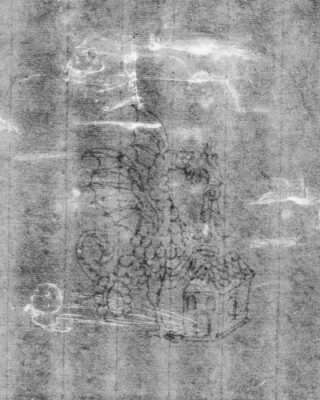Book bindings which are very similar to today’s existed as early as the first century AD.Before, written manuscripts were mainly kept as scrolls. The earliest bound collections of loose leaves are called “codices”. They were collected using Coptic binding, in which several layers of paper are bound together by intertwining a thread.
Then, as early as the 2nd century, books with a soft binding appeared. These early specimens are most comparable to our modern paperbacks; they had either no binding at all or a soft parchment or paper binding. Later, bookbinders began experimenting with wooden bindings, often covered with leather.
The oldest bound book in the Western world is the St. Cuthbert Gospels, dated to the 8th century AD and now a part of the holdings of the British Library. Scientific research, including a CT scan, provided detailed insights into the structure of the book. A clay-like material was found between the leather and the wooden boards, which raised the pattern on the cover.
As medieval bookbinding evolved, staples were added to some books to stabilize them. Similar bindings were found on books with parchment covers. However, since parchment is very sensitive to moisture, books were increasingly bound with cloth.
Nowadays we carry the world’s knowledge around in our smartphones, but in earlier centuries it could only be stored and passed on in books. Between the 13th and 16th centuries, the rate of those who were able to read increased, and this was followed by an innovative way of binding books: the girdle book. These books had a second cover over the leather binding, with which they could be fastened to a belt. This allowed the educated, wealthy bourgeois population to carry books (mainly religious texts) with them at all times.
Over time, books became more and more elaborate. The invention and spread of paper made it possible to produce books in editions that had not been possible before. These continuous developments also required a certain degree of automation in the binding process. In order to keep pace with the increasing demand, both the materials used and the techniques had to be revised. In the course of industrialization in the 19th century, books were no longer bound exclusively by hand. Increasingly, publishers took over the entire process of book making, from printing to binding. Books were printed on brittle paper, and by the end of the century, almost all books received a cloth binding. Many libraries re-bound these books, although nowadays attempts are made to preserve the old bindings.
By the 20th century, bookbinding was fully mechanized and glue replaced thread to hold the pages together. But not everyone was enthusiastic about this. Bookbinders see their craft as an art instead of an industry. To counter this, bookbinders continue to communicate the value of traditional techniques. There are competitions that impressively convey the art of the craft; an art form that always strives for perfection.



